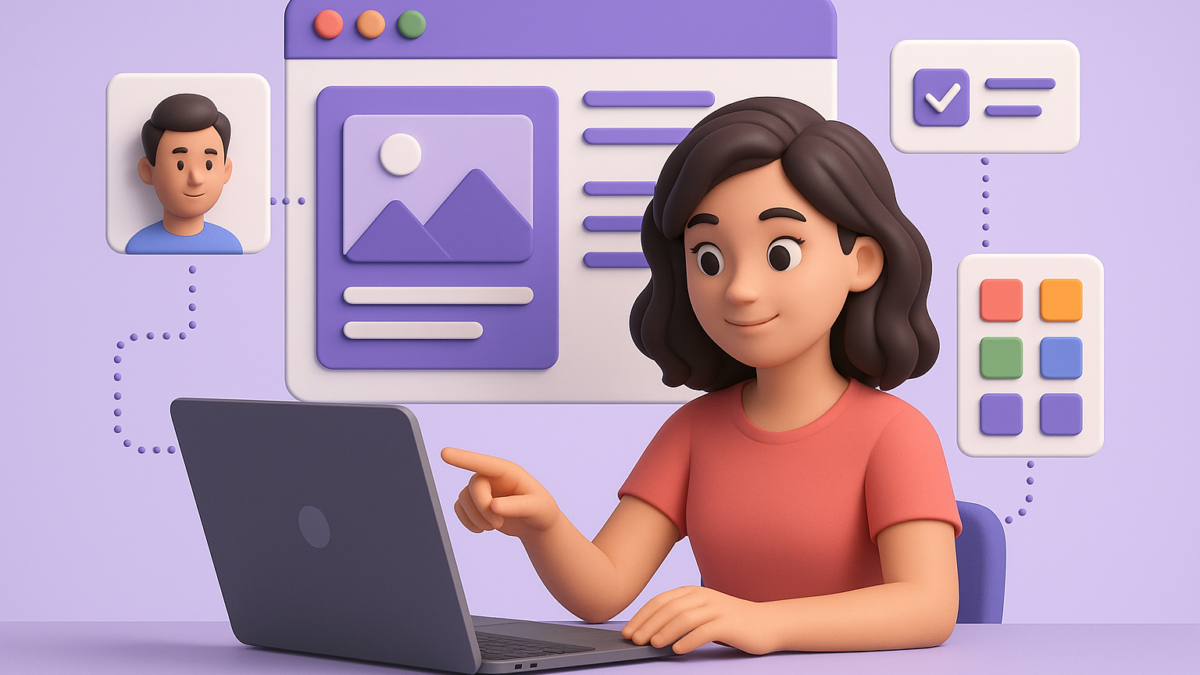From Pixels to Predictions: How AI Is Personalizing Design for Every User
Table of Contents
In today’s fast-moving digital world, personalization is no longer a luxury it’s an expectation.
From your Netflix recommendations to the way your smartphone home screen adapts to your habits, artificial intelligence (AI) is quietly shaping design decisions around you every day.
In 2025, the relationship between AI and design has evolved from simple automation to deep personalization. Designers now have access to intelligent tools that understand users’ behaviors, emotions, and intentions — creating designs that feel almost human.
Let’s explore how AI is redefining digital design, one personalized experience at a time.
1. Understanding AI-Powered Personalization
AI-driven personalization is about predicting user needs before they even click.
By analyzing millions of data points — browsing patterns, eye movement, dwell time, and even sentiment — AI helps designers create user interfaces that dynamically adapt to each person’s preferences.
For instance, modern UI/UX tools like Adobe Sensei, Figma AI, and Uizard use machine learning to recommend layout variations, font pairings, and visual hierarchies that match user intent.
This goes far beyond aesthetic design it’s about understanding context, emotion, and usability.
2. The Evolution: From Static to Adaptive Design
Traditional design was static a one-size-fits-all approach.
But today’s AI-driven systems are adaptive, evolving in real-time based on user interaction.
Consider an eCommerce website that learns from each customer’s clicks.
Instead of showing the same homepage to every visitor, AI curates product layouts, color schemes, and call-to-action buttons that best resonate with that individual.
This fusion of predictive analytics and design intelligence results in higher engagement, faster conversions, and more meaningful digital experiences.
3. Generative AI: The Designer’s New Creative Partner
Generative AI tools like Midjourney, Sora, and Adobe Firefly are revolutionizing visual storytelling. They allow designers to generate new concepts, textures, and compositions in seconds, freeing up time for strategy and innovation.
What makes this transformative is co-creation.
AI doesn’t replace the designer — it enhances them. The human provides vision; AI provides variation. Together, they produce highly personalized, scalable, and visually compelling content faster than ever before.
In 2025, creative workflows are no longer linear. They’re predictive, collaborative, and powered by intelligence.
4. Predictive Design: Where AI Anticipates User Intent
Predictive design is one of AI’s most exciting frontiers.
Imagine your favorite app changing its layout based on your behavior — enlarging buttons when it senses you’re on the move or switching to dark mode before you even think to toggle it.
AI achieves this through real-time behavioral prediction and continuous learning. It’s not just about reacting — it’s about anticipating.
Major tech companies like Google, Apple, and Canva are already integrating predictive UX that aligns with accessibility needs, device type, and user emotion. The result? Seamless, intuitive experiences that feel tailor-made for every user.
5. Ethical Design in the Age of AI
With personalization comes responsibility.
As AI gets better at understanding and influencing users, designers must prioritize ethical and inclusive design. Ensuring transparency, avoiding bias in algorithms, and maintaining privacy are essential to building trust.
Brands that balance personalization with integrity will stand out in 2025’s increasingly data-driven world.
6. The Future: Emotionally Intelligent Design
The next leap in AI design isn’t just predictive it’s emotional.
Emerging systems are learning to interpret tone, expression, and even micro-emotions through facial and voice data. This allows interfaces to respond empathetically — from adjusting tone in chatbots to modifying design elements based on user sentiment.
This is where design meets empathy, and AI becomes a true creative collaborator rather than just a computational tool.
Final Thoughts
From pixels to predictions, AI is transforming design into a living, breathing system that evolves with every interaction.
Businesses that embrace AI-driven personalization will not only enhance user experience but also deepen brand loyalty and drive measurable growth.
In 2025, great design isn’t just about how it looks it’s about how intelligently it adapts.
Call to Action (CTA)
Want to deliver personalized experiences that truly resonate with your audience?
Discover how iTMunch’s B2B Content Syndication Services can amplify your brand reach through intelligent distribution and audience targeting — powered by data, AI, and design innovation.
See Also: Generative AI in Whitepapers: How AI is Transforming B2B Research and Writing





